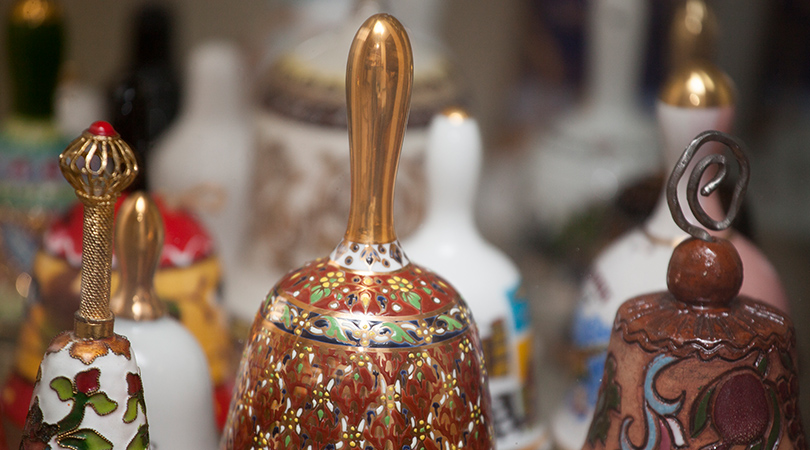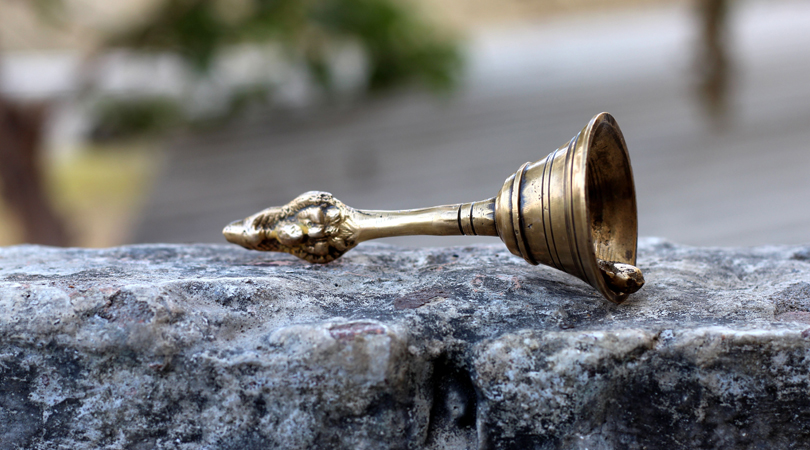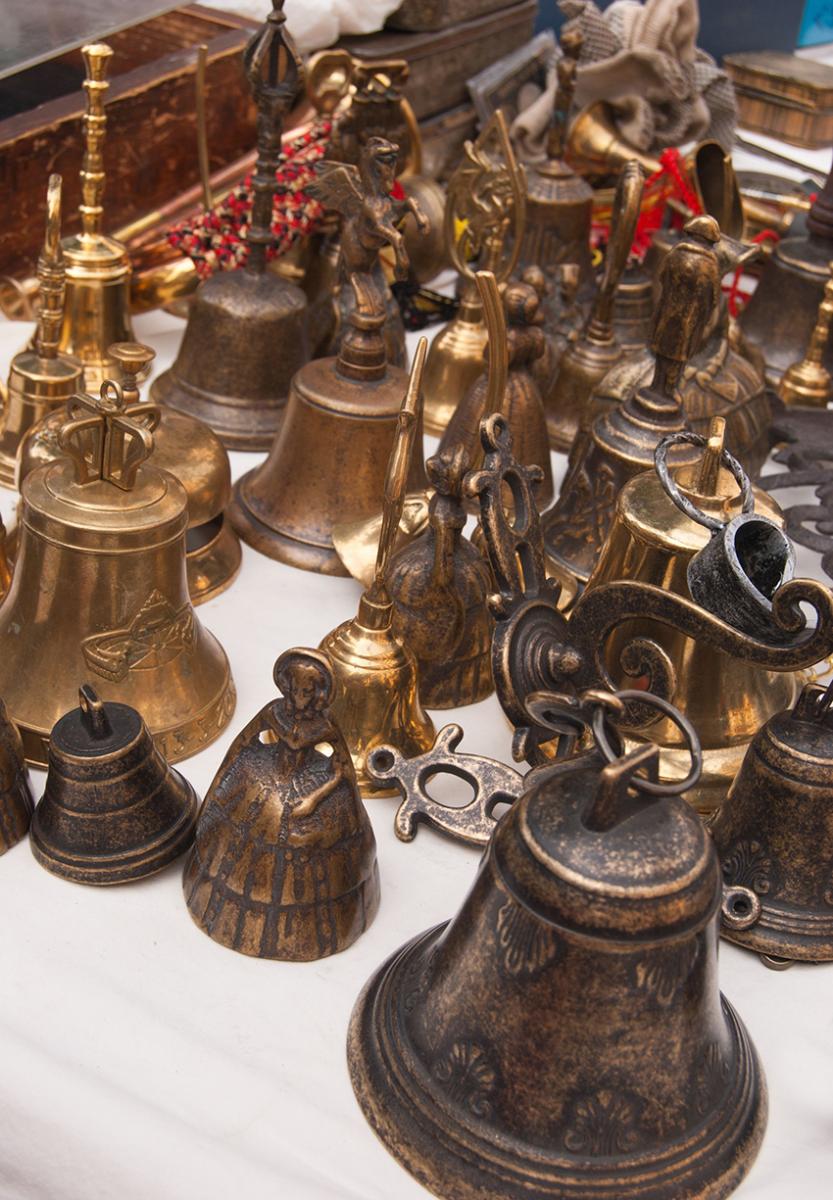Handheld bells are some of the oldest instruments in the world, with an unfussiness of design that enabled widespread adoption in early cultures. To ring a handheld bell, simply take hold of the handle and rock it back and forth, bringing the clapper into contact with the inner sound bow. This sends reverberations throughout the bell – giving us those dainty, scintillating tones.
As technology and artistry spread, handheld bells took on increasingly specialized uses. The act of tinkling a bell could add mysticism to religious rites, communicate across the household, announce the arrival of a visitor, or add richness to music. Handheld bells that are tuned harmonically and arranged in sets are called handbells. Handheld bells became part of daily life inside and outside the home.

Image: The silver Coachman Bell, a Russian figurine bell c. 1870, in the Marjorie Merriweather Post collection at Hillwood Estate.
The Victorians took handheld bells a step further, emphasizing the style of a bell and working intricate designs from sterling silver, gold, crystal, and porcelain. A handheld bell enhanced a lady’s dressing table, came standard in a tableware set, and accompanied tea service in the afternoon. Every respectable desk had a handheld bell resting to the side. How else were the privileged classes supposed to summon an attendant?




